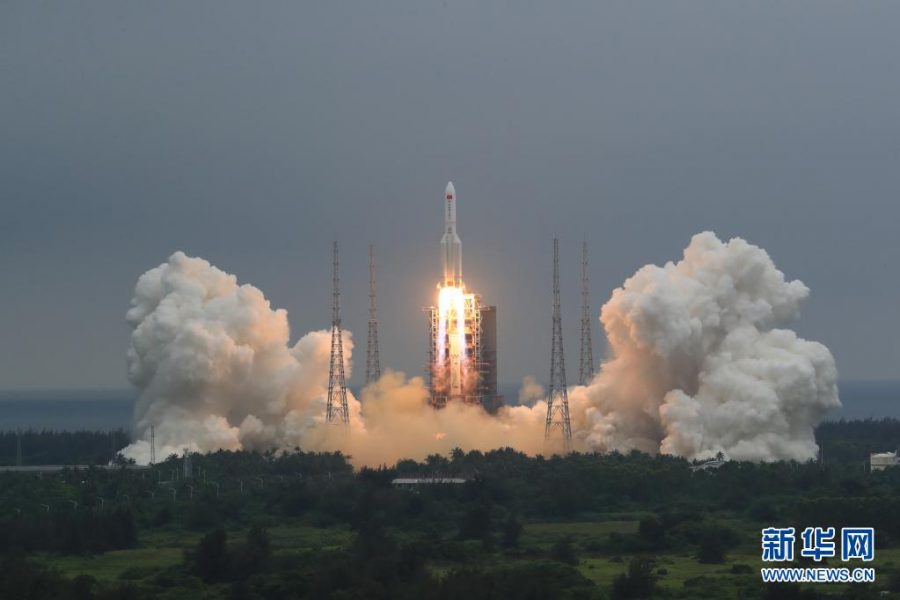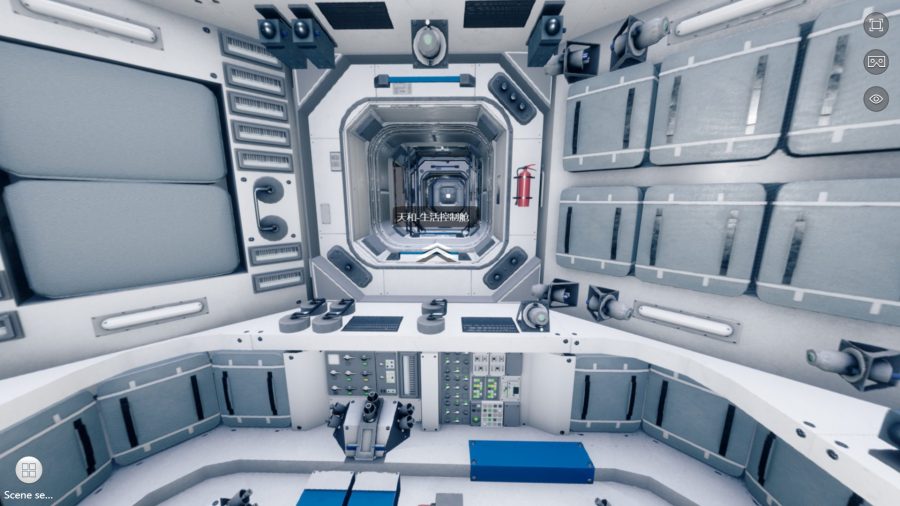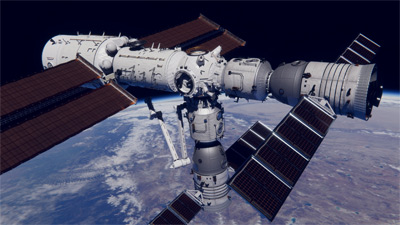China has launched the first section of its Tiangong modular space station, which will take shape over the coming year.

A Long March 5B rocket roared to life over the Wenchang Space Launch Centre on April 29th, carrying the core module, named Tianhe (Chinese for “harmony in the heavens”), for China’s Tiangong modular space station.
The launch occurred at 3:23 Universal Time (11: 23 p.m. EDT on April 28th). China later confirmed that the 22.5-ton Tianhe module had successfully reached orbit.
“The success of this launch mission marks the full launch of the orbital assembly and construction of the Chinese space station, laying a solid foundation for subsequent key technology verification and the smooth implementation of the space station’s assembly and construction,” says Hao Chun (China Manned Space Engineering Office) in a recent press release.
The station is expected to operate for 10 years. Two other modules are due to launch by early 2022: the Wentian Experimental Module and the Mengtian Experimental Module, both of which will attach to the Tianhe core module.
Tianhe is similar to the central Zarya module at the heart of the International Space Station that module launched in 1998.
Hao Chun from China Manned Space Engineering Office has outlined for next space station missions:
Tianzhou-2: May (cargo)
Shenzhou-12: June (3 astros, 3 months)
Tianzhou-3: September
Shenzhou-13: October (3 astros, 6 months)
Wentian, Mentian modules, TZ-4 & 5, SZ-14 &15 in 2022.— Andrew Jones (@AJ_FI) April 29, 2021
The space station will begin to accept automated Tianzhou cargo vehicles and crewed Shenzhou spacecraft, starting perhaps as early as next month. It’s uncertain at this point if three-person crews will carry out a permanent presence on the space station, or whether they'll rotate out in temporary expeditions.
Tianhe and the Tiangong modular space station will take into account lessons learned during the earlier Tiangong 1 space station started in 2011, and Tiangong 2, which started in 2016. Those early one-module stations let China practice key elements needed for a larger platform, including automated rendezvous, docking, and lengthier stays in space.

CNSA
U.S. International Traffic in Arms Regulations (ITAR) restricts technology trade between the U.S. and China, making China one of the few space-faring nations that is conspicuously absent from the International Space Station. Though China is largely going it alone in space, the country's space agency may open up its own space station to international participation.
Though the International Space Station has hosted a continuous human presence in space since 2000, this could well end in the coming years. Though the U.S. once again has the capability to send crew to the station thanks to SpaceX’s Crew Dragon, Russia has hinted at leaving the ISS partnership, perhaps as early as 2025. This could mean China’s station could take up the mantle of continuing a human presence in low-Earth orbit by the late 2020s.
The launch follows a string of successes in space for China over the past year, including the Chang’e 5 lunar sample return in late 2020 and the arrival of the Tianwen 1 mission in orbit around Mars earlier this year. Tianwen 1 is set to deploy its lander and rover on Mars this coming May.
How to Observe the Tiangong Modular Space Station

CNSA
Like the ISS, Tianhe will also be highly visible in orbit as assembly begins. The core module is listed as COSPAR ID 2021-035A and orbits every 92 minutes at an altitude of 370 kilometers (230 miles), inclined 41° relative to Earth’s equator. This means the orbit reaches its farthest point north right over latitude 41°N, roughly corresponding to New York City, Chicago, and Salem, Oregon. Heavens-Above will list the station on their front page.
Watch for a good pass of the Tainhe core module and the new space station as it takes shape, coming to a sky near you.
 3
3
Comments
23333333
April 29, 2021 at 8:55 pm
In my memory, Tiangong 3 task was cancelled after Tiangong2 was launched so as to save cost.I learned that the official name of the station is Tiangong. Why the passage calls the station Tiangong3?
You must be logged in to post a comment.
David DickinsonPost Author
April 30, 2021 at 9:19 am
Yup. Good catch. This one is technically the 'Tiangong modular space station' or simply 'Tiangong' confusing, I know.
You must be logged in to post a comment.
Aaron
April 30, 2021 at 7:20 pm
Salem, OR is at about 45°N. In fact, the southern border of Oregon is 42°N. Maybe change to Redding, CA or Salt Lake City, UT for a western US city near 42°N.
You must be logged in to post a comment.
You must be logged in to post a comment.